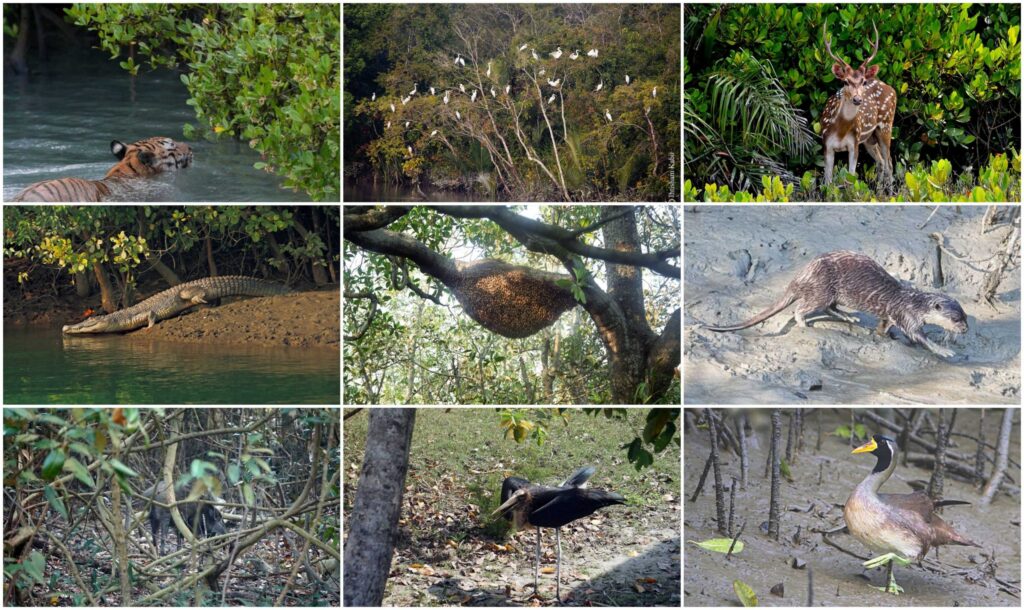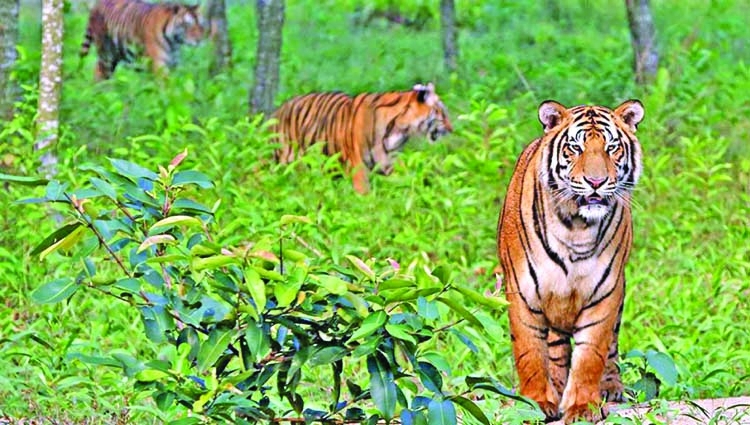
Sundarbans: The Enigmatic Mangrove Forest of Bangladesh
The fascinating and mysterious Sundarbans are a mangrove forest that stretches over the Ganges, Brahmaputra, and Meghna River deltas in southwest Bangladesh. Renowned for its distinct ecosystem and abundant biodiversity, this mangrove forest is the largest in the world and has been inscribed as a UNESCO World Heritage Site. With an area of almost 10,000 square kilometers, the Sundarbans are a breathtaking natural wonder that enthralls everyone who explores its depths.

Biodiversity Refuge: The remarkable biodiversity of the Sundarbans is among its most remarkable attributes. Numerous plant and animal species, many of which are peculiar to the area, find refuge in the dense mangrove forests. Because they are suited to live in salty water, mangrove trees themselves form a maze of branches and roots that serve as an essential home for a wide variety of animals. The Sundarbans are home to a wide variety of remarkable species, including the elusive Irrawaddy dolphins and the spectacular Royal Bengal Tiger.

Tiger Region: The Bengal tigers that live in the Sundarbans are probably most well-known for their freedom to roam among the dense mangrove forests. The Sundarbans are home to one of the biggest tiger populations in the world, with an estimated 200 Bengal tigers. These magnificent hunters, who have adapted to living in mangrove forests, are skilled swimmers and hunt animals like deer, wild boar, and monkeys. A unique and thrilling experience, seeing a Bengal tiger in the wild emphasizes the untainted beauty and strength of the natural world.
Mangrove Ecosystem: The distinctive mangrove environment of the Sundarbans, where water and land meet in a precarious balance, is what makes the region so unique. The complex system of mudflats, tidal creeks, and canals produces a dynamic ecosystem that is ever-changing due to the tides. The mangrove trees are essential for maintaining the shoreline’s stability, preventing erosion, and acting as a barrier against tsunamis and storm surges. The Sundarbans also serve as a natural filter, capturing silt and cleaning the water before it enters the sea.
Investigating Sundarbans: Discovering the Sundarbans is an unparalleled adventure. Take a guided boat excursion around the meandering waterways, passing serene creeks and thick mangrove forests. They might come across a range of animals along the route, such as vibrant birds fluttering among the branches and crocodiles tanning on the riverbanks. Experience the forest on foot with guided jungle walks, where trained guides will teach you about the distinctive wildlife and vegetation of the Sundarbans.
In summary: To sum up, the Sundarbans are an incredibly beautiful and biologically rich area in Bangladesh that is considered a natural gem. It is a place unlike any other because of its unique habitat, abundant wildlife, and extensive mangrove forests.
